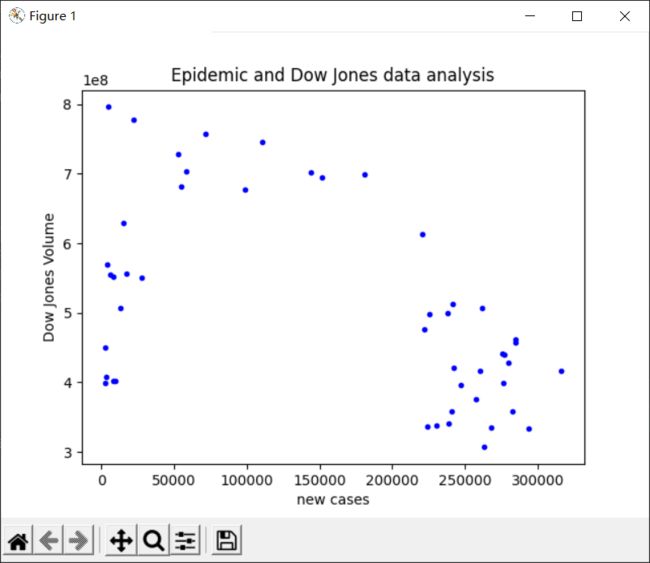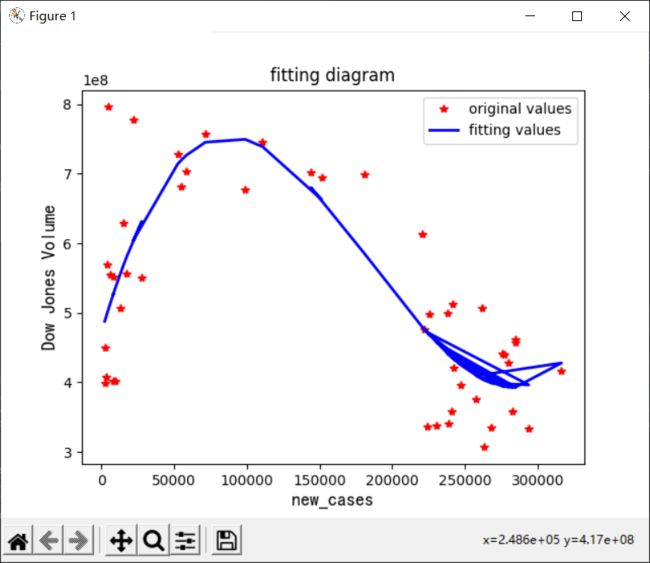- 测试用例要如何写
测试界茜茜
软件测试测试用例功能测试软件测试自动化测试程序人生职场和发展
1、测试点与测试用例测试点不等于测试用例,这是我们首先需要认识到的。问题1:这些测试点在内容上有重复,存在冗余。问题2:一些测试点的测试输入不明确,不知道测试时要测试哪些。问题3:总是在搭相似的环境,做类似的操作。问题4:测试点描述得太粗,不知道是不是测对了。测试点是测试者在测试时需要关注的地方。虽然我们在分析测试点时,会使用各种测试方法,但这些方法在思路和操作上都是不同的,一些方法得到的测试点要
- keepalived的工作原理与配置
皮蛋solo.粥
云计算网络云计算linux
Keepalived的工作原理基于VRRP(虚拟路由冗余协议)和LVS(Linux虚拟服务器),通过多层次协作实现服务器的高可用性和负载均衡。以下是其核心机制的详细说明:一、VRRP协议基础VRRP(VirtualRouterRedundancyProtocol)是Keepalived实现高可用的核心协议,其作用是:将多台服务器组成一个虚拟路由器,对外提供一个统一的虚拟IP(VIP)。通过选举机制
- 红队测试-代理和中间人攻击工具
小浪崇礼
BetterCAP-Modular,portableandeasilyextensibleMITMframework.Ettercap-Comprehensive,maturesuiteformachine-in-the-middleattacks.Habu-Pythonutilityimplementingavarietyofnetworkattacks,suchasARPpoisoning,D
- pyside6使用1 窗体、信号和槽
一、概要由于作者前期很多年都在使用C++和Qt框架进行项目的开发工作,故可以熟练的使用Qt框架。Qt框架在界面设计以及跨平台运用方面,有着巨大的优势,而界面设计恰恰是python的短板,故使用pyside6实现python和Qt的互补。1.1pyside6安装更新pip工具:pipinstall--upgradepip命令行执行如下指令:pipinstallpyside6-ihttps://pyp
- python-读写mysql(操作mysql数据库)
importpymysqlimportpandasaspdimporttimeonly_time=time.localtime(time.time())time_now=time.strftime('%Y-%m-%d%H:%M:%S',only_time)dt=time.strftime('%Y%m%d',only_time)t=time.time()tt=int(t)parentId=''sta
- 程序人生之项目团队那些人与事(1)
chilavert318
熬之滴水穿石程序人生团队项目经理
序原本是打算继续温习我对于windows内核的理解的,已经写到我最为头疼的地方。说实话,把内核了解清楚,不是写几篇感悟就可以完全搞明白的。连日都开会,临近年底要参加很多会议,原本将每日更新技术贴的计划变得十分紧凑,思维也变得世俗起来。连日听各个项目汇报情况,怎会有这样或者那样的问题。似乎很多问题,我都似曾相识,但是为什么总会有人在重复着某些人的过去,这到底是为什么?看着工资条上工龄工资一栏,猛地意
- 技术演进中的开发沉思-15 window编程系列:内存体系结构(下)
chilavert318
熬之滴水穿石windows
今天接着上个章节没讲完的内容继续,在我眼里Windows内存体系结构就如同深埋在海底的神秘宝藏,承载着系统运行的关键密码,今天我们从其中的页面保护属性、实例分析与数据对齐说起。一、页面保护属性在Windows的内存世界里,页面保护属性就像是一支训练有素的守护者联盟,它们日夜坚守岗位,守护着数据的安全与稳定,确保系统能够有条不紊地运行。每一种保护属性都有着独特的职责与使命,它们相互协作,共同构建起一
- python读写mysql
cavin_2017
Python学习
目前用到的连接数据库,主要实现连个功能:1.根据sql查询2.将dataframe数据通过pandas包写入mysql数据库中1.根据sql查询:通常我们通过sql查询mysql中的表,分三步1.连接数据库2.数据查询3.关闭连接,如果需要查询的步骤较多,将查询封装成函数,通过参数传递sql代码会省事很多。##定义连接数据库函数defmy_db(host,user,passwd,db,sql,po
- 【Elasticsearch】安全地删除快照仓库、快照
安全地删除快照仓库、快照1.删除仓库2.删除快照在上一篇博文《【Elasticsearch】快照与恢复功能详解》中,我们针对Elasticsearch的快照和恢复功能进行的讲解。细心的同学可能会对以下的命令产生疑惑,直接删除是安全的吗?本文将会给你答案。删除仓库:DELETE/_snapshot/my_backup_repo删除快照:DELETE/_snapshot/my_backup_repo/
- arXiv.org
arXiv的发展历程与目标解析一、发展历程:从邮件列表到学术基础设施(1991年至今)萌芽期(1989-1991)起源:1989年,物理学家PaulGinsparg基于弦理论专家的邮件列表,尝试自动化预印本分发。1991年8月,洛斯阿拉莫斯国家实验室上线xxx.lanl.gov,最初仅服务高能物理领域,通过电子邮件接收投稿,半年内收录400篇论文。技术突破:1993年接入万维网,成为首个使用“摘要
- 高效沟通的原则与方法论(分歧处理的实践)
口子窖
高效沟通的原则与方法论(分歧处理的实践)原则认识根源首先要认清分歧产生的根源,绝不能片面化。一些常见的案例:1、领导:这个页面没有突出重点,指标换个颜色会不会好点2、A同事:这个研发规范是谁制定出来的,增加了我好多工作量,而且根本没有可执行性对于1,通常情况下大家就采用哪种颜色展开了讨论,决定之后,沟通过程结束。对于2,不出意外A同事起个头,BCD同事相继抱怨,负能量传遍整个团队。但是,对于1,问
- 技术演进中的开发沉思-42 MFC系列:Components 与 ActiveX Controls
chilavert318
熬之滴水穿石mfcc++windows
点击程序启动时,是不是看过有加载的画面。在VC开发时,可使用VC++的ComponentGallery,找到Splashscreen组件,当时觉得组件就是给程序员的暖手宝。一、ComponentGalleryComponentGallery在VC++里的位置很特别——它藏在“Project”菜单的二级目录里,就像老衣柜最上层那个带锁的抽屉,不常用但一打开全是宝贝。当年我们团队有个不成文的规矩:新项
- uniapp微信小程序 实现swiper与按钮实现上下联动
是菜菜的小前端啊
uni-app微信小程序前端
1.需求:页面顶部展示n个小图标。当选中某个图标时,下方视图会相应切换;反之,当滑动下方视图时,顶部选中的图标也会同步更新。2.思路:上方scroll-view区域渲染图标,并且可左右滑动,下方使用swiper可以左右滑动。3.代码实现上方图标渲染(1)将scroll-x属性设为true以启用左右滑动功能,同时动态绑定scroll-left属性实现上下联动滑动效果。{{item1.name}}(2
- 面试
张家小闹
一年一度的教师资格证面试又开始了,坐了整整一天,腰都断了,坐不住了。回家躺下就睡过去了。脑子一片空白。醒来发现作业的事忘得一点影子也没有了。参加面试的孩子们有的真的不适合做教师,写的字像虫子爬,对文本的理解能力叫人担忧,表达能力更不敢恭维。其实面对他们内心是纠结的,矛盾的,希望有更多的年轻人加入到教师队伍中,解决饭碗问题,又希望是些优秀的人,因为要对孩子们负责。所以在过与不过之间常常很纠结。还有一
- Spring MVC、Spring Boot 和 Spring Cloud简要介绍及区别
箬敏伊儿
javaspringbootspringspringcloud
SpringMVC、SpringBoot和SpringCloud是Spring生态系统中的三个重要组件,它们在不同层面上帮助开发者构建和管理应用程序。以下是对它们的介绍及其区别:SpringMVC介绍SpringMVC(Model-View-Controller)是一个基于Java的Web框架,用于构建Web应用程序和RESTful服务。它提供了一组组件和注解,简化了Web应用程序的开发,尤其是与
- python+playwright 学习-91 cookies的获取保存删除相关操作
上海-悠悠
playwrightpython
前言playwright可以获取浏览器缓存的cookie信息,可以将这些cookies信息保存到本地,还可以加载本地cookies。获取cookies相关操作在登录前和登录后分别打印cookies信息,对比查看是否获取成功。fromplaywright.sync_apiimportsync_playwrightwithsync_playwright()asp:browser=p.chromium.
- Python——登录后获取cookie访问页面
尖叫的太阳
importrequestsurl="https://kyfw.12306.cn/otn/view/index.html"#网址首页https://kyfw.12306.cn/otn/view/index.html的cookieheaders={'User-Agent':'Mozilla/5.0(WindowsNT6.1;Win64;x64)','Cookie':'JSESSIONID=3330D
- 与姐姐交换琴魂后,我成了天命琴女(乐华若瑶)全章节在线阅读_乐华若瑶全章节在线阅读_与姐姐交换琴魂后,我成了天命琴女(乐华若瑶)完整版免费阅读_(与姐姐交换琴魂后,我成了天命琴女)全章节免费在线...
笔趣阁热门小说
与姐姐交换琴魂后,我成了天命琴女(乐华若瑶)全章节在线阅读_乐华若瑶全章节在线阅读_与姐姐交换琴魂后,我成了天命琴女(乐华若瑶)完整版免费阅读_(与姐姐交换琴魂后,我成了天命琴女)全章节免费在线阅读_与姐姐交换琴魂后,我成了天命琴女(乐华若瑶)全集阅读_与姐姐交换琴魂后,我成了天命琴女最新章节阅读主角配角:乐华若瑶简介:琴神一脉每一位神女降世,都伴有一把灵琴等到神女飞升成神时,若神女抚琴引得灵琴聚
- 海思沧海诗集(2022年)(35)之《有着希望的心》
海思沧海
海思沧海诗集(2022年)《有着希望的心》文/海思沧海如果心里一直是空白,是不是就是一片荒漠是爱过了?还是一直都没有爱的存在还有到底什么是爱?是一种喜欢?还是一种感觉遇见了吗?还是那个爱的人还没有出现哪里才有自己真的喜欢的人?走过的路还有那过去的点点滴滴,是否你就在其中只是我们已经错过那么多美好的时光岁月不再,你已经也去了远方或许,只有我一个人的思念与孤独可我的心里依然有着过去的全部,只是成了回忆
- 播音主持专业就业前景
配音就业圈
在当今这个信息爆炸、媒体融合加速的时代,播音主持专业作为传媒领域的重要分支,其就业前景展现出了前所未有的广阔与多样性。配音兼职接单推荐公众号,配音新手圈,声优配音圈,新配音兼职圈,配音就业圈,鼎音副业,有声新手圈,每天更新各种的配音任务,新手小白也可以接单。1、配音新手圈这是一个公众号配音新手圈里面每天更新配音任务(只要有手机就可以接单,对经验无要求),都是适合没有基础的人去做的,每天都会发布新任
- 复盘《商业闭环里最重要的一环——交付》
蒲兰Dandelion
第一次以第四阶层来思考的复盘,从操盘手的角度来分析问题。以下午的155人在来切入以下午的155人在线的答疑干货来切入,听了的人都觉得很有价值,花99旁听到3999元的一对一的咨询。有一波正向反馈,答疑的内容认真执行就会收获巨大。而且你只要说一句就知道你缺啥?从底层逻辑来剖析问题,最快的成长方式是跨行去观察学习思考:以下午的超值交付入手,这个话题的切入已经在体现超值交付;同时收获一大波正向证言,发了
- 戴锦华演讲:在属于自己的时代,逃向未来
单向街书店
1月12日,著名学者戴锦华作为第四届单向街书店文学奖的顾问,为获得年度致敬奖的董秀玉颁奖,并发表了主题演讲“属于我自己的时代”。在演讲中,她回顾了自己对于代沟、对于年轻一代、对于自我与世界未来的判断,并且修正了它。她认为“小时代”是对今天世界的一种误判,在我们感到普遍的无助与绝望时,不应该放弃守望,而是应该看到我们的前辈为我们打开的历史空间,并且继续呼唤新的可能性的到来,继续挑战和反抗这个现实又功
- python request 获取cookies value值的方法
dianqianwei8752
pythonc/c++
importrequestsres=requests.get(url)cookies=requests.utils.dict_from_cookiejar(res.cookies)print(cookies[key])转载于:https://www.cnblogs.com/VseYoung/p/python_cookies.html
- 无问西东
fhharmony
刚看到《无问西东》这部电影时,就被它的开场所吸引,是那么的舒缓平静,让人的内心顷刻间释放下来,不带任何的包袱与伪装,那么真实坦然。就像电影里每个人的脸上所流露出来的那样,坦然面对自己的内心,做自己想做的事情,面对最真实的自己。最打动我的就是每个人的脸上的那份淡然真实与笃定,这是最为珍贵的,也是现在的我们极为缺乏的。“如果提前了解了你们的青春,你们是否还有勇气前来”。当听到这句话时,自己的内心几乎是
- python连接达梦数据库方式
water bucket
python数据库pandas
1、通过jaydebeapi调用jdbcimportpandasaspdimportjaydebeapiif__name__=='__main__':url='jdbc:dm://{IP}:{PORT}/{库名}'username='{username}'password='{password}'jclassname='dm.jdbc.driver.DmDriver'jarFile='{DmJdb
- 学习游戏制作记录(敌人的状态机,敌人和玩家的共同继承以及实现敌人的移动和待机)7.20
★YUI★
学习游戏unityc#
1.敌人的状态机敌人的状态与玩家类似,同样需要敌人,敌人状态和管理状态的状态机,让我们创建三个脚本:Enemy,EnemyState,EnemyStateMachine。EnemyState脚本:publicclassEnemyState//不需要继承,因为它将作为父类{protectedEnemyStateMachineenemyStateMachine;//状态机protectedEnemye
- 拼多多优惠券在哪里找(拼多多优惠券的寻找方法)
高省APP
大家好,我是高省运营高小省,对于所有的推广者而言,优惠券的权限其实是一样的,你在这个APP能拿到的券,你上另外一个APP也能拿到,所以什么样的优惠券APP才算是好用呢?要么是能给你筛选出真正优惠的券&活动要么是能给你业内较高佣金返还,前者首推什么值得买,是一个有着非常多优质用户投稿&互动的消费者社区。后者五花八门的可就太多了,在使用体验上最好的肯定是【高省】与淘宝、拼多多、京东、唯品会、苏宁易购等
- 计算机网络
哪里不会点哪里.
网络计算机网络服务器网络
目录一、OSI与TCP/IP各层的结构与功能二、三次握手和四次挥手1.三次握手2.为什么要三次握手3.第二次握手回传了ACK,为什么还要回传SYN4.四次挥手三、TCP协议如何保证可靠传输四、状态码五、Cookie和Session六、HTTP1.0和HTTP1.1七、URI和URL八、HTTP和HTTPS一、OSI与TCP/IP各层的结构与功能应用层应用层(application-layer)的任
- 阿里云天池-学习笔记(7.22)
2301_81822737
深度学习
概念的初步认识和学习一、损失函数损失函数是衡量模型预测值与真实值之间差异的一个量度,通过最小化这个差异来优化模型的参数。损失函数的选择直接影响到模型的训练效果和最终性能。二、one-hot编码one-hot编码使用N位状态寄存器来对N个状态进行编码,每个状态都有它独立的寄存器位,并且在任意时候其中只有一位有效(即为1,其余为0)。具体来说,对于每个分类变量,都会为其分配一个唯一的二进制位,并使用该
- 借助零信任网格重塑分布式MCP与LLM访问:安全、灵活的下一代架构实践
码力金矿
机器学习深度学习人工智能人工智能自动化运维数据库mysqlpythonjava
在数字化转型的浪潮中,AI应用与分布式系统正在加速融合。传统架构中,MCP(模型上下文协议)服务与LLM(大语言模型)工具的部署常面临安全暴露、网络复杂性、跨防火墙通信等挑战。本文将结合零信任网格(ZTM,ZeroTrustMesh)与Flomesh技术,探索一种更安全、灵活的分布式架构方案,让MCP服务无需VPN或静态IP即可实现全球可访问,同时为LLM应用提供统一的安全层。一、传统分布式架构的
- Spring4.1新特性——Spring MVC增强
jinnianshilongnian
spring 4.1
目录
Spring4.1新特性——综述
Spring4.1新特性——Spring核心部分及其他
Spring4.1新特性——Spring缓存框架增强
Spring4.1新特性——异步调用和事件机制的异常处理
Spring4.1新特性——数据库集成测试脚本初始化
Spring4.1新特性——Spring MVC增强
Spring4.1新特性——页面自动化测试框架Spring MVC T
- mysql 性能查询优化
annan211
javasql优化mysql应用服务器
1 时间到底花在哪了?
mysql在执行查询的时候需要执行一系列的子任务,这些子任务包含了整个查询周期最重要的阶段,这其中包含了大量为了
检索数据列到存储引擎的调用以及调用后的数据处理,包括排序、分组等。在完成这些任务的时候,查询需要在不同的地方
花费时间,包括网络、cpu计算、生成统计信息和执行计划、锁等待等。尤其是向底层存储引擎检索数据的调用操作。这些调用需要在内存操
- windows系统配置
cherishLC
windows
删除Hiberfil.sys :使用命令powercfg -h off 关闭休眠功能即可:
http://jingyan.baidu.com/article/f3ad7d0fc0992e09c2345b51.html
类似的还有pagefile.sys
msconfig 配置启动项
shutdown 定时关机
ipconfig 查看网络配置
ipconfig /flushdns
- 人体的排毒时间
Array_06
工作
========================
|| 人体的排毒时间是什么时候?||
========================
转载于:
http://zhidao.baidu.com/link?url=ibaGlicVslAQhVdWWVevU4TMjhiKaNBWCpZ1NS6igCQ78EkNJZFsEjCjl3T5EdXU9SaPg04bh8MbY1bR
- ZooKeeper
cugfy
zookeeper
Zookeeper是一个高性能,分布式的,开源分布式应用协调服务。它提供了简单原始的功能,分布式应用可以基于它实现更高级的服务,比如同步, 配置管理,集群管理,名空间。它被设计为易于编程,使用文件系统目录树作为数据模型。服务端跑在java上,提供java和C的客户端API。 Zookeeper是Google的Chubby一个开源的实现,是高有效和可靠的协同工作系统,Zookeeper能够用来lea
- 网络爬虫的乱码处理
随意而生
爬虫网络
下边简单总结下关于网络爬虫的乱码处理。注意,这里不仅是中文乱码,还包括一些如日文、韩文 、俄文、藏文之类的乱码处理,因为他们的解决方式 是一致的,故在此统一说明。 网络爬虫,有两种选择,一是选择nutch、hetriex,二是自写爬虫,两者在处理乱码时,原理是一致的,但前者处理乱码时,要看懂源码后进行修改才可以,所以要废劲一些;而后者更自由方便,可以在编码处理
- Xcode常用快捷键
张亚雄
xcode
一、总结的常用命令:
隐藏xcode command+h
退出xcode command+q
关闭窗口 command+w
关闭所有窗口 command+option+w
关闭当前
- mongoDB索引操作
adminjun
mongodb索引
一、索引基础: MongoDB的索引几乎与传统的关系型数据库一模一样,这其中也包括一些基本的优化技巧。下面是创建索引的命令: > db.test.ensureIndex({"username":1}) 可以通过下面的名称查看索引是否已经成功建立: &nbs
- 成都软件园实习那些话
aijuans
成都 软件园 实习
无聊之中,翻了一下日志,发现上一篇经历是很久以前的事了,悔过~~
断断续续离开了学校快一年了,习惯了那里一天天的幼稚、成长的环境,到这里有点与世隔绝的感觉。不过还好,那是刚到这里时的想法,现在感觉在这挺好,不管怎么样,最要感谢的还是老师能给这么好的一次催化成长的机会,在这里确实看到了好多好多能想到或想不到的东西。
都说在外面和学校相比最明显的差距就是与人相处比较困难,因为在外面每个人都
- Linux下FTP服务器安装及配置
ayaoxinchao
linuxFTP服务器vsftp
检测是否安装了FTP
[root@localhost ~]# rpm -q vsftpd
如果未安装:package vsftpd is not installed 安装了则显示:vsftpd-2.0.5-28.el5累死的版本信息
安装FTP
运行yum install vsftpd命令,如[root@localhost ~]# yum install vsf
- 使用mongo-java-driver获取文档id和查找文档
BigBird2012
driver
注:本文所有代码都使用的mongo-java-driver实现。
在MongoDB中,一个集合(collection)在概念上就类似我们SQL数据库中的表(Table),这个集合包含了一系列文档(document)。一个DBObject对象表示我们想添加到集合(collection)中的一个文档(document),MongoDB会自动为我们创建的每个文档添加一个id,这个id在
- JSONObject以及json串
bijian1013
jsonJSONObject
一.JAR包简介
要使程序可以运行必须引入JSON-lib包,JSON-lib包同时依赖于以下的JAR包:
1.commons-lang-2.0.jar
2.commons-beanutils-1.7.0.jar
3.commons-collections-3.1.jar
&n
- [Zookeeper学习笔记之三]Zookeeper实例创建和会话建立的异步特性
bit1129
zookeeper
为了说明问题,看个简单的代码,
import org.apache.zookeeper.*;
import java.io.IOException;
import java.util.concurrent.CountDownLatch;
import java.util.concurrent.ThreadLocal
- 【Scala十二】Scala核心六:Trait
bit1129
scala
Traits are a fundamental unit of code reuse in Scala. A trait encapsulates method and field definitions, which can then be reused by mixing them into classes. Unlike class inheritance, in which each c
- weblogic version 10.3破解
ronin47
weblogic
版本:WebLogic Server 10.3
说明:%DOMAIN_HOME%:指WebLogic Server 域(Domain)目录
例如我的做测试的域的根目录 DOMAIN_HOME=D:/Weblogic/Middleware/user_projects/domains/base_domain
1.为了保证操作安全,备份%DOMAIN_HOME%/security/Defa
- 求第n个斐波那契数
BrokenDreams
今天看到群友发的一个问题:写一个小程序打印第n个斐波那契数。
自己试了下,搞了好久。。。基础要加强了。
&nbs
- 读《研磨设计模式》-代码笔记-访问者模式-Visitor
bylijinnan
java设计模式
声明: 本文只为方便我个人查阅和理解,详细的分析以及源代码请移步 原作者的博客http://chjavach.iteye.com/
import java.util.ArrayList;
import java.util.List;
interface IVisitor {
//第二次分派,Visitor调用Element
void visitConcret
- MatConvNet的excise 3改为网络配置文件形式
cherishLC
matlab
MatConvNet为vlFeat作者写的matlab下的卷积神经网络工具包,可以使用GPU。
主页:
http://www.vlfeat.org/matconvnet/
教程:
http://www.robots.ox.ac.uk/~vgg/practicals/cnn/index.html
注意:需要下载新版的MatConvNet替换掉教程中工具包中的matconvnet:
http
- ZK Timeout再讨论
chenchao051
zookeepertimeouthbase
http://crazyjvm.iteye.com/blog/1693757 文中提到相关超时问题,但是又出现了一个问题,我把min和max都设置成了180000,但是仍然出现了以下的异常信息:
Client session timed out, have not heard from server in 154339ms for sessionid 0x13a3f7732340003
- CASE WHEN 用法介绍
daizj
sqlgroup bycase when
CASE WHEN 用法介绍
1. CASE WHEN 表达式有两种形式
--简单Case函数
CASE sex
WHEN '1' THEN '男'
WHEN '2' THEN '女'
ELSE '其他' END
--Case搜索函数
CASE
WHEN sex = '1' THEN
- PHP技巧汇总:提高PHP性能的53个技巧
dcj3sjt126com
PHP
PHP技巧汇总:提高PHP性能的53个技巧 用单引号代替双引号来包含字符串,这样做会更快一些。因为PHP会在双引号包围的字符串中搜寻变量, 单引号则不会,注意:只有echo能这么做,它是一种可以把多个字符串当作参数的函数译注: PHP手册中说echo是语言结构,不是真正的函数,故把函数加上了双引号)。 1、如果能将类的方法定义成static,就尽量定义成static,它的速度会提升将近4倍
- Yii框架中CGridView的使用方法以及详细示例
dcj3sjt126com
yii
CGridView显示一个数据项的列表中的一个表。
表中的每一行代表一个数据项的数据,和一个列通常代表一个属性的物品(一些列可能对应于复杂的表达式的属性或静态文本)。 CGridView既支持排序和分页的数据项。排序和分页可以在AJAX模式或正常的页面请求。使用CGridView的一个好处是,当用户浏览器禁用JavaScript,排序和分页自动退化普通页面请求和仍然正常运行。
实例代码如下:
- Maven项目打包成可执行Jar文件
dyy_gusi
assembly
Maven项目打包成可执行Jar文件
在使用Maven完成项目以后,如果是需要打包成可执行的Jar文件,我们通过eclipse的导出很麻烦,还得指定入口文件的位置,还得说明依赖的jar包,既然都使用Maven了,很重要的一个目的就是让这些繁琐的操作简单。我们可以通过插件完成这项工作,使用assembly插件。具体使用方式如下:
1、在项目中加入插件的依赖:
<plugin>
- php常见错误
geeksun
PHP
1. kevent() reported that connect() failed (61: Connection refused) while connecting to upstream, client: 127.0.0.1, server: localhost, request: "GET / HTTP/1.1", upstream: "fastc
- 修改linux的用户名
hongtoushizi
linuxchange password
Change Linux Username
更改Linux用户名,需要修改4个系统的文件:
/etc/passwd
/etc/shadow
/etc/group
/etc/gshadow
古老/传统的方法是使用vi去直接修改,但是这有安全隐患(具体可自己搜一下),所以后来改成使用这些命令去代替:
vipw
vipw -s
vigr
vigr -s
具体的操作顺
- 第五章 常用Lua开发库1-redis、mysql、http客户端
jinnianshilongnian
nginxlua
对于开发来说需要有好的生态开发库来辅助我们快速开发,而Lua中也有大多数我们需要的第三方开发库如Redis、Memcached、Mysql、Http客户端、JSON、模板引擎等。
一些常见的Lua库可以在github上搜索,https://github.com/search?utf8=%E2%9C%93&q=lua+resty。
Redis客户端
lua-resty-r
- zkClient 监控机制实现
liyonghui160com
zkClient 监控机制实现
直接使用zk的api实现业务功能比较繁琐。因为要处理session loss,session expire等异常,在发生这些异常后进行重连。又因为ZK的watcher是一次性的,如果要基于wather实现发布/订阅模式,还要自己包装一下,将一次性订阅包装成持久订阅。另外如果要使用抽象级别更高的功能,比如分布式锁,leader选举
- 在Mysql 众多表中查找一个表名或者字段名的 SQL 语句
pda158
mysql
在Mysql 众多表中查找一个表名或者字段名的 SQL 语句:
方法一:SELECT table_name, column_name from information_schema.columns WHERE column_name LIKE 'Name';
方法二:SELECT column_name from information_schema.colum
- 程序员对英语的依赖
Smile.zeng
英语程序猿
1、程序员最基本的技能,至少要能写得出代码,当我们还在为建立类的时候思考用什么单词发牢骚的时候,英语与别人的差距就直接表现出来咯。
2、程序员最起码能认识开发工具里的英语单词,不然怎么知道使用这些开发工具。
3、进阶一点,就是能读懂别人的代码,有利于我们学习人家的思路和技术。
4、写的程序至少能有一定的可读性,至少要人别人能懂吧...
以上一些问题,充分说明了英语对程序猿的重要性。骚年
- Oracle学习笔记(8) 使用PLSQL编写触发器
vipbooks
oraclesql编程活动Access
时间过得真快啊,转眼就到了Oracle学习笔记的最后个章节了,通过前面七章的学习大家应该对Oracle编程有了一定了了解了吧,这东东如果一段时间不用很快就会忘记了,所以我会把自己学习过的东西做好详细的笔记,用到的时候可以随时查找,马上上手!希望这些笔记能对大家有些帮助!
这是第八章的学习笔记,学习完第七章的子程序和包之后

